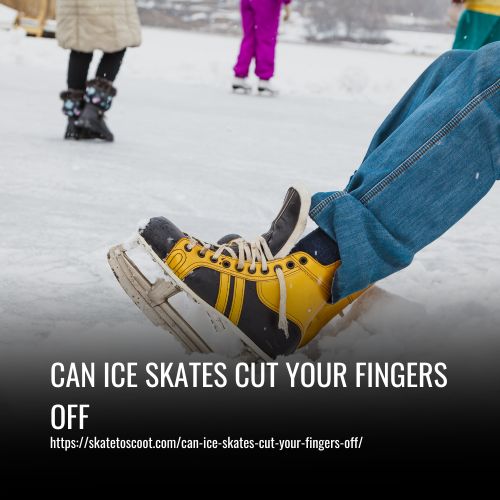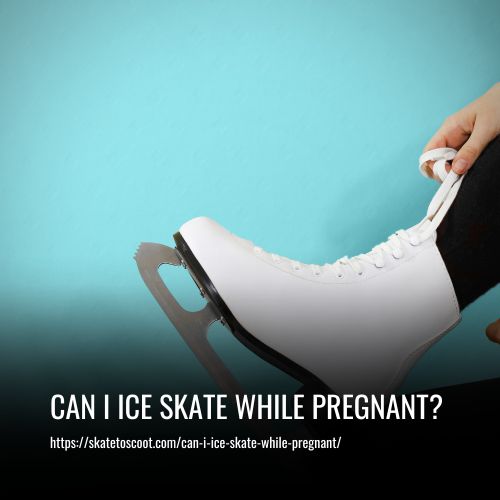As an Amazon Associate we earn from qualifying purchases.
Ice skates should be tight enough to provide support and keep the foot from sliding around, but not so tight that they cause discomfort or impede movement. The best way to determine the right tightness is to ask a professional at a skating rink or sporting goods store. It’s important to keep the toe of each skate firmly seated in the shoe and to find skates with a proper fit.
The fit should be snug but still allow for toe movement and no pressure points. Lace the skates snugly through the middle of the foot for support but slightly loosen them above the ankle. Avoid lacing the top eyelet for advanced skaters. Overall, find a comfortable fit that allows you to have control over your movements.

Is It Better for Ice Skates to Be Tight or Loose
When it comes to ice skates, it really depends on your personal preference and skill level. Beginner figure skaters or those with bigger feet should consider a looser fit that facilitates movement and natural extension when skating. To ensure the right fit, make sure the width of the boot sole is slightly smaller than your foot size.
For those who need extra support or those who prefer tighter skates, you can adjust the tightness by tightening screws on either side of the plate and/or increasing tension on lace/boot buckles.
It is important to keep in mind that some figure skates may require you to go up a size due to their wider toe box. Ultimately, it is best to try on different sizes until you find the one that fits you most optimally!
How To Tight Ice Skates
It’s essential to ensure that your ice skates are the correct fit. If your skates are too tight, it could cause distress and discomfort while skating, whereas if your skates are too loose, they could slip off and cause potential injury or damage.
That being said, it’s important to make sure that your ice skates fit snugly so that they stay on and give you the best performance possible. Avoid stepping on the tongue of your ice skates, as it may damage the sole.
1. Lace Skate Up the Correct Way
Making sure you lace up your ice skates correctly can be the difference between a good skate session and a painful one. It’s important to ensure that your laces are secured tightly without squeezing your feet or fingers when tying up your skates.
To ensure even tension, try using a loop tool or your fingers to pull each individual loop taut before knotting it in place. If you’re having trouble with constantly untying knots, try using wax or blister pliers to break the hold on the lace strands instead of tugging them by hand.
Once both sides of your skate’s tongue are tightened, check once more for tightness and security so you don’t overtighten the laces and cause them to wear unevenly over time.
2. Don’t Overtighten Your Laces
It is essential not to overtighten the laces on your ice skates. Going too far with the laces can cause them to break or become loose over time, increasing your risk of harm.
According to skating manufacturers, you should tighten your skates by a half-turn at a time. This offers just enough slack in the lacing system to make sure it does not hurt when you skate later on.
When you first put on your skates, if they feel tight leave them at that level for about an hour before adjusting them again. It may be helpful to consult with a skating professional if there is any doubt as to how tightly the laces should be tightened.
3. Keep Your Heel Snug in the Heel Pocket
When it comes to keeping your ice skates fitting snugly, the heel pocket is key. When you lace up your skates, make sure they fit snugly in the heel pocket so that your heels don’t slide around or feel loose. This will help you avoid trips and falls while you are skating, both indoors and outdoors.
Once you’re finished skating, don’t forget to take off your skates and store them properly. Taking the time to do this will protect your flooring from damage.
Also, don’t forget to put on sunscreen before heading out for an outdoor session – it’s not fun scraping frost off of cold skin!
4. Get a Good Fit When Standing on Your Skates
It’s important to ensure your skates fit properly when first putting them on, which will help prevent injury and discomfort. It’s also important to make sure your heel is centered over the toe plate for the perfect snug fit.
If you have skates that are too tight, it may cause discomfort in the sides of your feet and ankles. To make sure you get the right fit, it is best to wear them for an extended time before making a final decision.
Be careful not to adjust your ice skates more than once every few minutes – doing so can affect the sole and straps in an adverse way. Ultimately remember that a good-fitting pair of ice skates will ensure comfort while enjoying all winter has to offer!
How Do You Know If Your Ice Skates are too Tight
It can be difficult to know if your ice skates are too tight, but there are a few key signs that should indicate that they need to be adjusted.
1. Check Toe Fit
A good way to make sure your ice skates fit properly is to check the toe fit. Ensure that the toe of your skate fits tightly in the shoe and that there is no gap at either the front or the back. In other words, you should be able to easily slide your hand into the shoe and feel no space between either end of your toes.
Make sure that your ice skates don’t leave any space at the top – if you can feel any room, it is likely an indication that your skates are too tight. If this is the case, you will have to get them adjusted before skating or risk putting unnecessary strain on your feet and ankles.
2. Assess Space at the Top of Your Skates
It’s important to assess the space at the top of your ice skates before you buy them. Ensure that there are no extra pieces of material sticking out of your skate boot insoles as it can cause discomfort while skating or navigating obstacles.
3. Look for Zero Space in the Front And Back of Your Skates
If you want to find out if your ice skates are too tight, then you’ll need to look for zero space in the front and back of your skates. This is important for good ankle support so that you can move confidently on the ice. To do this, just check that both sides of each boot fit snugly together and there’s no gap between them.
For a little extra support at the heel, make sure that your third toe on your non-dominant foot hangs off the side edge by around 1-2 mm from its base. If it does hang off too much, then you might need to go up half a size from what you usually wear.
By looking for zero space in the front and back of your skates, you can ensure that they give you great ankle support while still allowing freedom of movement during those quick turns!
What are the Consequences of Having Skates That Are Too Tight?
If your ice skates are too tight, the consequences can be serious. It can cause a lot of discomfort, with pain around the feet and ankles, limiting your movement and making it difficult to skate correctly.
This could even lead to injuries due to the pressure being applied in areas that were not meant to support them. In addition, if they are indeed too tight, they may even cause circulation problems in the feet and ankles as well.
Overall, having skates that fit perfectly is essential for safety while skating. Make sure they are comfortable yet snug so that you can easily perform all your movements without worrying about injuries or other complications.
Do Ice Skates Loosen Up?
Over time, ice skates can definitely loosen up. If you start to feel like your skates are becoming unstable and dangerous, it’s important to take them off and give them a deep clean. It could be that the blades of the skate are too small for your foot which will cause them to become loose quicker than normal.
To maximize the lifespan of your skate boots, make sure they are always kept clean by getting rid of dirt, salt, and scuffs. This will protect the boot liner from any damage and ensure they work properly in cold weather conditions.
Also, when taking off one pair and putting on another always do so carefully as this process can help increase the longevity of a boot.
Although ice skating is usually safe, there is still a chance that accidental trips or scrapes might lead to some damage – in which case it’s best to get new ice skaters altogether.
How to Check If Your Skates Fit Comfortably?
Ensuring your ice skates fit comfortably is essential for enjoying the rink, and here’s how you’ll be sure! To start, your heel should rest snugly in the back of the skate with no gap.
Your toes should also not be cramped and there should be about a thumb-width of space between your big toe and the front of the skate.
Also, make sure that while walking and standing inside your skates, your foot shouldn’t slide around. Additionally, verify that the skate tongue lies flat against your foot with no bunching up.
And lastly, check to see if you can freely wiggle all of your toes inside without feeling any tightness.
FAQs
To make sure you pick the right size of ice skates, you should consider your height, weight, shoe size, and foot width. Use a size chart to ensure your ideal fit.
Ice skates should be snug but not too tight. You should have some room to move your toes, however, you shouldn’t have any excess space. If you are between sizes, it is best to go with the smaller size.
Ice skates should be snug but not too tight, and the laces should be tied tightly enough so your foot won’t slide when you are on your feet.
Skaters should tie their skates with moderate tightness around the middle and looser at the ankle.
Conclusion
In conclusion, having the right amount of tightness in your ice skates is essential for a safe and enjoyable experience on the rink. Your skates should be snug but also comfortable so that you can move freely and enjoy movements such as stops and turns with ease.
With a little bit of patience and a few extra minutes, you can find the perfect fit for your ice skates so you can get out on the ice sooner rather than later!
Amazon and the Amazon logo are trademarks of Amazon.com, Inc, or its affiliates.



